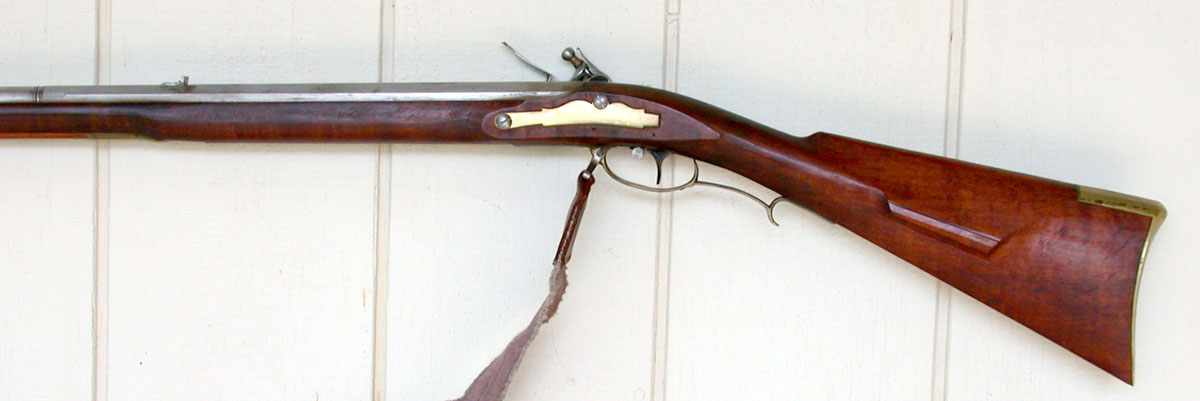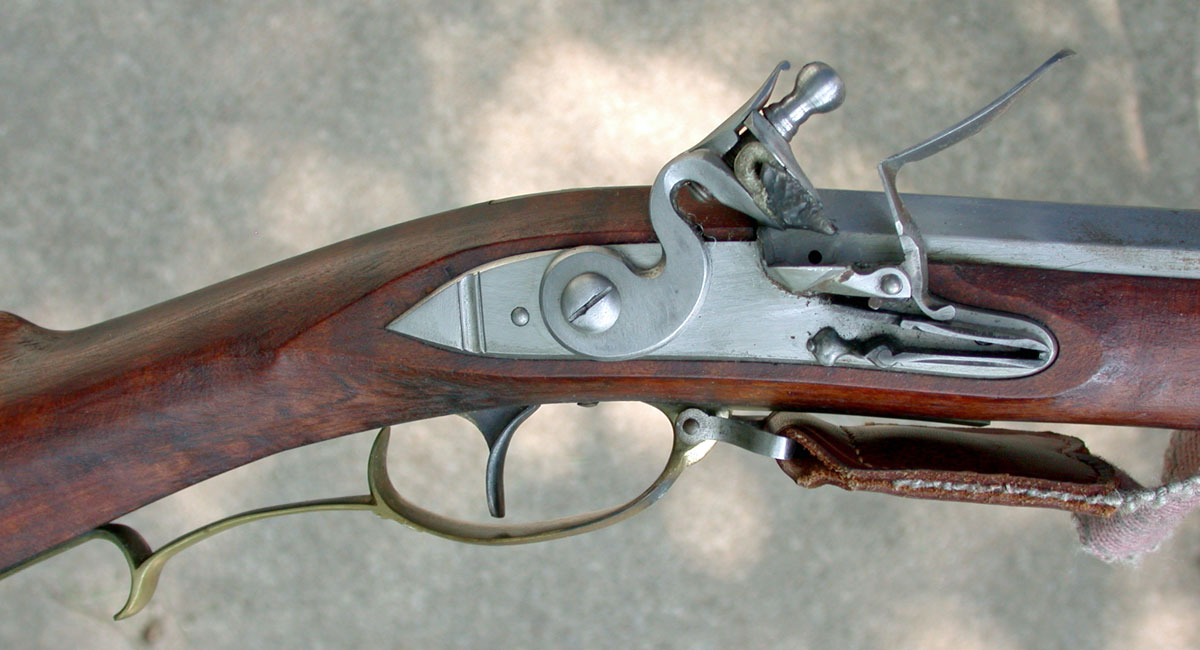In the 1800s most gunmakers were buying barrels and locks and apprentices were doing the grunt work one might be inletting locks another would be sawing out the blank or inletting the barrel in the roughed out stock.
Gunmakers in the 1760s and 1770s were also using imported locks from England and Germany and buying barrel blanks according to the records in the Moravian archives for Bethlehem and Christian's Spring gun shops. See Robert Lienemann's two books on Moravian Gunmaking.
Conversely, Charles E. Hanson, Jr. documented in
The Hawken Rifle: Its Place in History that the Hawken brothers were making some of their own barrels and locks in the 1830s and 1840s.
The question is as appropriate for the early 1800s as it is for the late Colonial period and the answer would be about the same.
I agree that most gunmakers had an apprentice or two and some of the larger shops had one to several journeymen working for them, but if you add up each of their time spent on each part of the gun, you get about the same answer as a single gunmaker doing it all.
I haven't read the article in the latest American Rifleman magazine about the Williamsburg gunsmiths, but I would go with their estimate to completely build a rifle from scratch.
On the other hand, Bob Lienemann had an interest in plain rifles and in his research on the Moravian gunmakers noted that they made rifles for different price points. He was curious as to how quickly an experience gunstocker like master gunmaker Jack Brooks could stock a plain unadorned rifle. After Jack built one, he commissioned several other noted gunmakers to do something similar. He wrote an article about it that was published in the summer 2017 issue of CLA’s A
merican Tradition magazine titled “3 Day Longrifles” – an example of a rifle built and finished in 3 days.
On another forum, Lienemann summarized Jack Brooks' efforts like this.
RP Lienemann-ALR Forum said:
So in spring 1995 I talked Jack into stocking a plain ca 1780 Lancaster style smooth rifle, where we would document the work and keep track of his time. Day one began with a maple plank, custom lock and barrel, sand cast mounts and brass and iron sheet. First morning the stock was cut to a pattern, breechplug fitted and tang shaped, and the barrel with plug inlet with gouge, chisel and scraper in 4-5 hours. Stock was trimmed, flipped and ramrod groove established, the ramrod hole drilled, barrel lugs installed and barrel pinned in place. Lock panels were established and the lock inlet as a unit without disassembly, lock bolts drilled and tapped, trigger plate made and inlet and the tang bolt installed. End of day one had the lock, stock and barrel together but no trigger - 10 hours work with lunch.
Day two – trigger made, inlet and pinned, layout lines with castoff, buttplate filed up and installed. Trigger guard casting filed up and installed, a sideplate sketched, cut, inlet and lock bolts finished. Ramrod pipes were formed, filed and inlet – forward pipes while stock in square, and entry pipe later when stock was shaped. Sling swivels made and stock shaping began with chisels, plane and rasps from square to final shape. Day two ended with the rifle mostly assembled and stock shaped from lock back – another 10 hour day.
Day three – shaped the forend, made and installed a two piece nosecap and ramrod entry pipe, front and rear sights made and installed. Touchhole was drilled and tapered, and barrel signed with maker’s name and year. Homemade Aquafortis applied and heated, then linseed oil rubbed on. A tapered ramrod of hickory was made with a reversible worm and iron tip pinned at breech end, stained and oiled. About midday on the 3rd day, the rifle was ready for the customer. We spent a bit of time boning the linseed oil into the stock and reviewing the project – photos of the project are included in the American Tradition article. Barrel and lock were left white as usual and the brass mounts burnished. A ca 1780’s Lancaster rifle from a blank and castings in two and a half days.
I'm borrowing a few of Lienemann's photos of the "3 day rifle" that Jack built.
Given an assembled lock, finished barrel, sand cast butt plate and trigger guard, brass sheet, and iron sheet and bar, it took roughly 25 hours to get to a finished rifle.
That leaves 375 hours to make the barrel (forge, file, ream, and rifle), make the lock (forge, file, mill, drill, tap and heat treat), and sand cast the brass hardware if all done by the gunsmith and apprentice like at Williamsburg.
Phil







